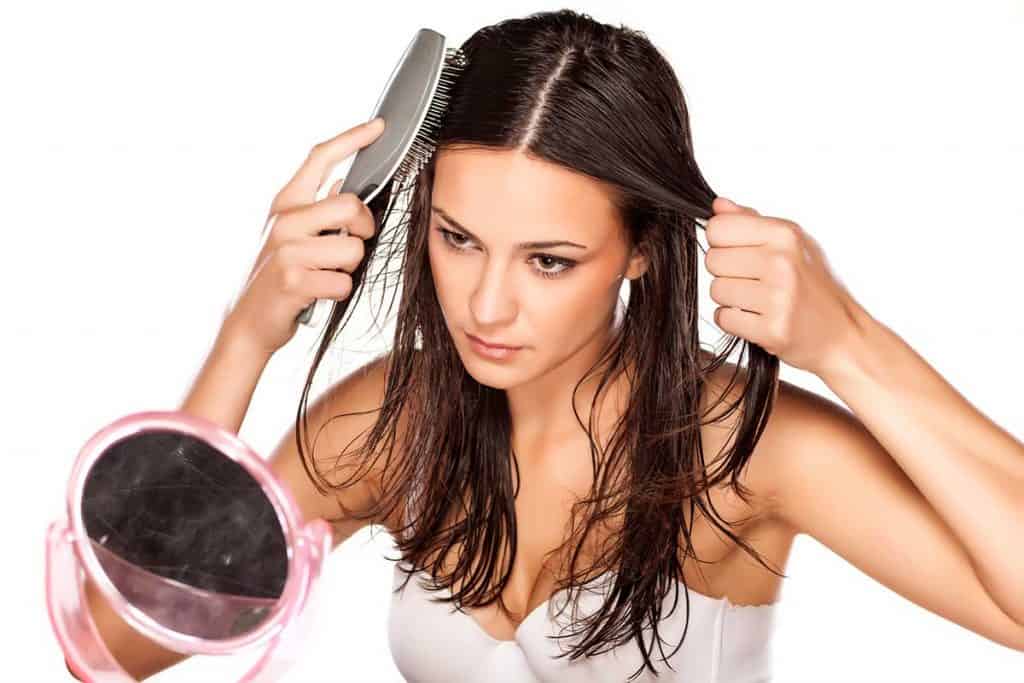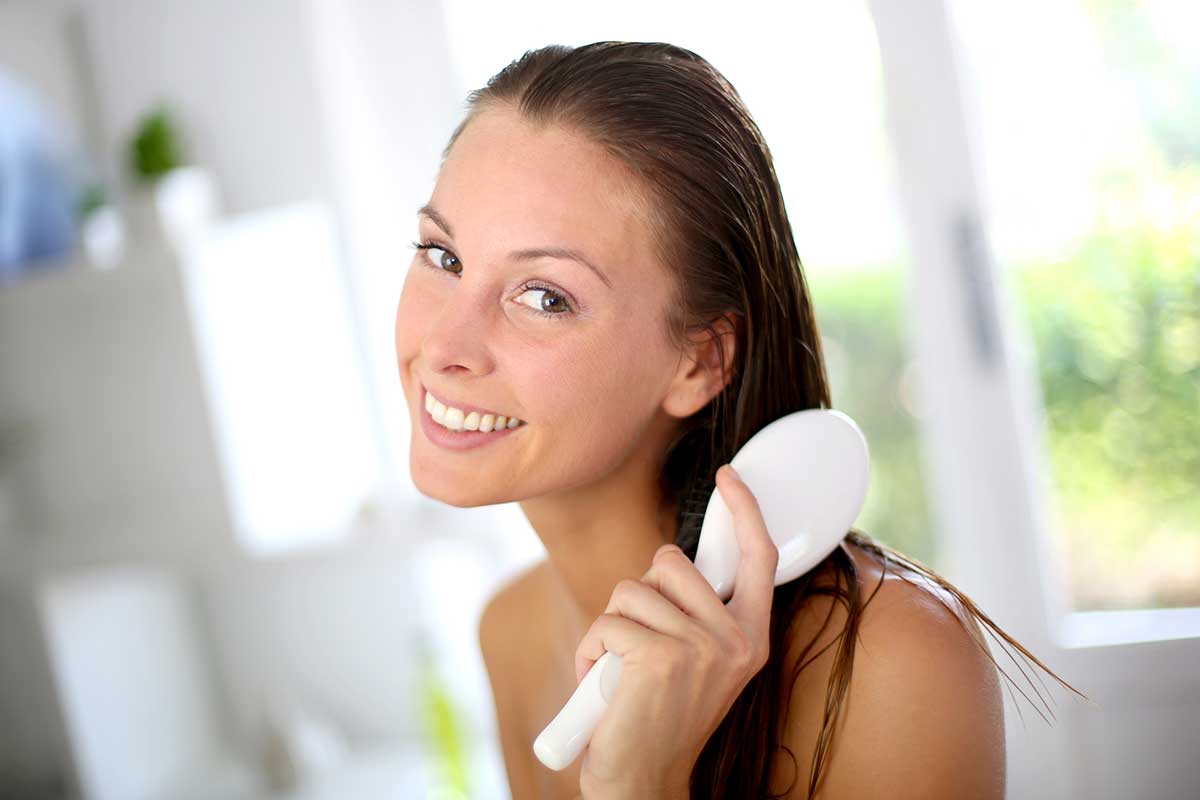
Since these hair tools are the biggest hype at the moment, we’re here to help you figure out if they’re the right choice for your hairdo. Are wet brushes good for your hair?
Although a wet brush is not a big investment, it is essential to learn whether it’s a healthy choice. The seven reasons we listed below should be good enough to convince you that this brush is a must-own tool that works for all hair types.
If you want to know all about wet brushes, why they’re an excellent alternative, whether to use them on wet or dry hair, and the difference between a wet brush and a traditional brush, tag along for the ride.
Table of Contents
7 Reasons Why You Should Use a Wet Brush
Is a wet brush good for your hair? Let’s start by saying that these tools are popular for a reason! Of course, wet brushes are great for the health of your hair, but to help you understand whether this is an investment to make, we wanted to include the major reasons you should use them.
1. Works for All Hair Types
Wet brushes come in various shapes, sizes, and colors. Although all wet hair brushes are great for various hair types, their diversity makes them even more suitable for all the hair types you can imagine. So if you’ve been in despair, struggling to find a great brush that will take care of your thick, coarse hair without pulling it or damaging it, you just found the solution.
Yes, wet brushes are an excellent alternative for all hair types, but you still have to find the right size. For example, long, thick hair will take forever to brush with a small paddle brush! That’s why you should look for larger brushes that will take care of your mane with ease in no time.
Thin hair requires a gentler approach; therefore, a smaller to middle-sized paddle brush will be more suitable. Since these wet brush bristles are bendy and thin, they will glide through thin hair no matter the length, leaving it smooth and knot-free.
Curly hair can also be very tricky to handle. Although it doesn’t require frequent brushing, you still should own a wet brush. The size that you choose will depend on the length.
Long, thick curls need a larger wet brush, while smaller brushes can work wonders for short, thin, curly do’s.
2. Stimulates the Scalp
Thanks to the unique design of these brushes, they stimulate the scalp while you’re brushing your hair. The bristles are softer than the bristles of traditional brushes; they’re pliable and thinner. So when you apply slight pressure to brush your hair on your scalp, it will feel like you’re massaging it.
The sensation is so pleasant that brushing your hair will become a therapeutic experience you’ll want to practice more often. Remember to use round movements with the brush to increase the scalp blood flow. This will eventually stimulate hair growth, and you’ll end up reaping a range of benefits.
3. No Pain
Taking care of tangled hair and knots can be frustrating, especially if you have to do it after every wash. Also, if you don’t have the right brush, the process will end up being painful and damage your gorgeous mane. But this is not the time to quit brushing because you just stumbled upon your solution.
Wet brushes are so beloved in the beauty community because they’re almost 100% pain-free. In other words, while you’re brushing those stubborn knots and tangles, the bristles will glide through them without pulling or tugging, and you won’t feel any pain.
Thanks to the unique bristle technology, wet brushes are pleasant to use and prevent the terrible pain that sometimes accompanies detangling. People with long, coarse, and curly hair will note the most significant difference because they’re the ones who usually struggle the most with tangles.
Unfortunately, tugging and pulling on hair can easily cause split ends, breakage, and a dull appearance. Pain is not the only thing you’re preventing with a wet brush. Let’s find out more in the following paragraph.

4. Minimum Damage
One of the most common questions that we get is “Do wet brushes damage hair?” The answer is pretty simple and straightforward — no! Wet brushes are specifically designed to prevent hair damage.
Protecting the health of your hair doesn’t only mean applying a hair mask several times a month. Great care and damage prevention include finding the right brush that won’t make brushing uncomfortable and won’t pull, tug, or rip.
Since it all starts with the basics, getting a wet hair brush is a smart move for everyone who wants to keep their hair damage-free, shiny, and long.
Because of the elastic, thin bristles, these brushes tackle knots and tangles with ease, no matter the hair type or hair length. In addition, unlike traditional brushes, they don’t get stuck when reaching knots; instead, they untangle them without the user feeling any pain.
This technology ensures that the brush reduces damage to a minimum, preventing breakage, split ends, and a dull appearance.
5. Great for Wigs
Did you know that these brushes can be used for wigs and hair extensions? Both wigs and extensions require a gentle approach; therefore, they’re the perfect candidates for a wet brush. In addition, since these hair tools are made with bendy, thin bristles, they will glide effortlessly through natural and synthetic hair without pulling, tugging, or damaging it.
Everyone that wants to extend the lifetime of their wigs and extensions should consider investing in one of these brushes for daily use.
6. Affordable
Wet brushes are available at various prices from many brands. This makes it easier for you to find one that will best fit your budget. In general, wet hair brushes are affordable and won’t cost you a fortune.
7. Easy to Clean and Use
A wet brush is usually lightweight, fits nicely on the palm of your hand, and is very simple to clean. There’s no need to worry that you’ll have to spend hours soaking it in solutions to remove bacteria. All it needs is a quick rinse with your preferred product, and you’re ready to go.
FAQs
Can you use a wet brush on wet hair?
Your hair is most fragile when it’s wet. Although essentially made for wet, damp, and dry hair, wet brushes are safest when used on damp hair.
Altogether avoiding hair damage when brushing it is practically impossible; there will always be a slight tugging or pulling. With a wet brush, you’re reducing the potential damage to a minimum, but you’ll do even better if you untangle the hair with your fingers after the shower and start brushing it once it’s damp.
When brushing your hair damp, you’re ensuring that there is little to no damage. Although there are wet brushes specifically made to be used under the shower, our recommendation is to wait 10 to 15 minutes before you brush your hair.
Can you use a wet brush on dry hair?
Wet brushes are designed to be used on dry and wet hair. The bristles can go through knots on dry and wet hair, efficiently removing them without causing pain. In other words, this type of hair brush can be used on dry hair, and you shouldn’t worry about breakage while using it.
What’s the difference between a wet brush and a normal brush?
The main difference between the two is the bristle design. A traditional brush is made with stiff bristles that are much thicker and less flexible than a wet brush’s design. These standard bristles tug and pull on hair, potentially causing damage.
On the other hand, wet brushes are designed with flexible bristles that don’t pull on the hair and glide gently through the strands.
Is a wet brush better for your hair than a comb?
It’s tough to compare these two tools since there are so many kinds of combs. However, combs and wet brushes can work well in tandem. Wide-tooth combs are a great way to remove tangles and knots on wet hair before you start brushing it with a wet brush.
Bye, Tangles!
To wrap things up, a wet brush is good for your hair! These unique hair brushes are easy to use, clean, reduce hair damage to a minimum, provide a pain-free experience, can stimulate the scalp, and work for all hair types.
Although designed for damp, wet, and dry hair, wet brushes are most efficient and least damaging when applied to damp hair. If you decide to use it on wet hair, do it with caution, following our instructions. Dry hair shouldn’t be a problem as long as you’re gentle and you don’t use force while brushing.
0


